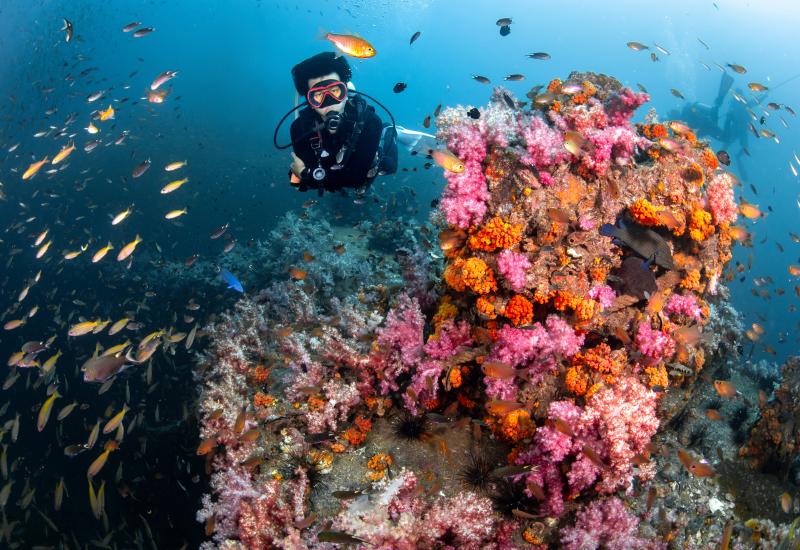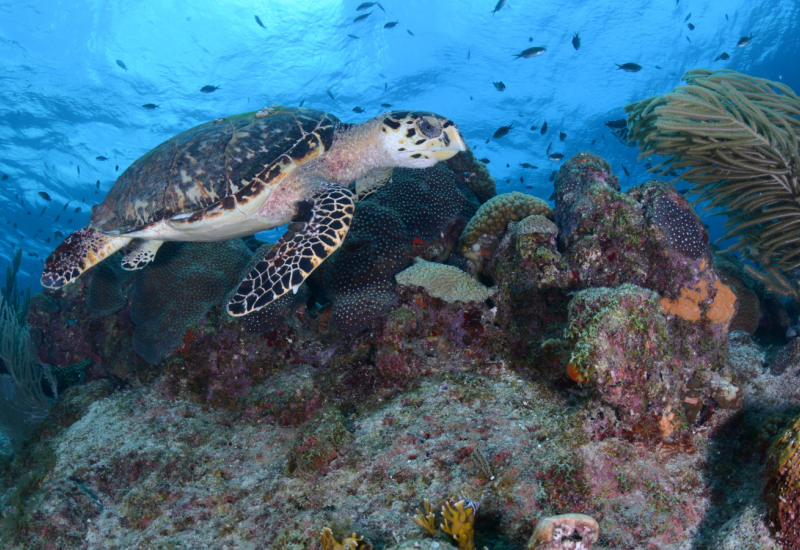Expedition Antarctica
We can’t reach this morning’s dive site — too many humpback whales block our Zodiac.
It’s day two of 10 of this Antarctic sailing aboard M/V Ortelius, one of four polar vessels operated by Oceanwide Expeditions. Off Cuverville Island, roughly halfway south along a peninsula jutting up like a pinky finger from the southernmost continent, we count 30 humpbacks before we even get in the water.
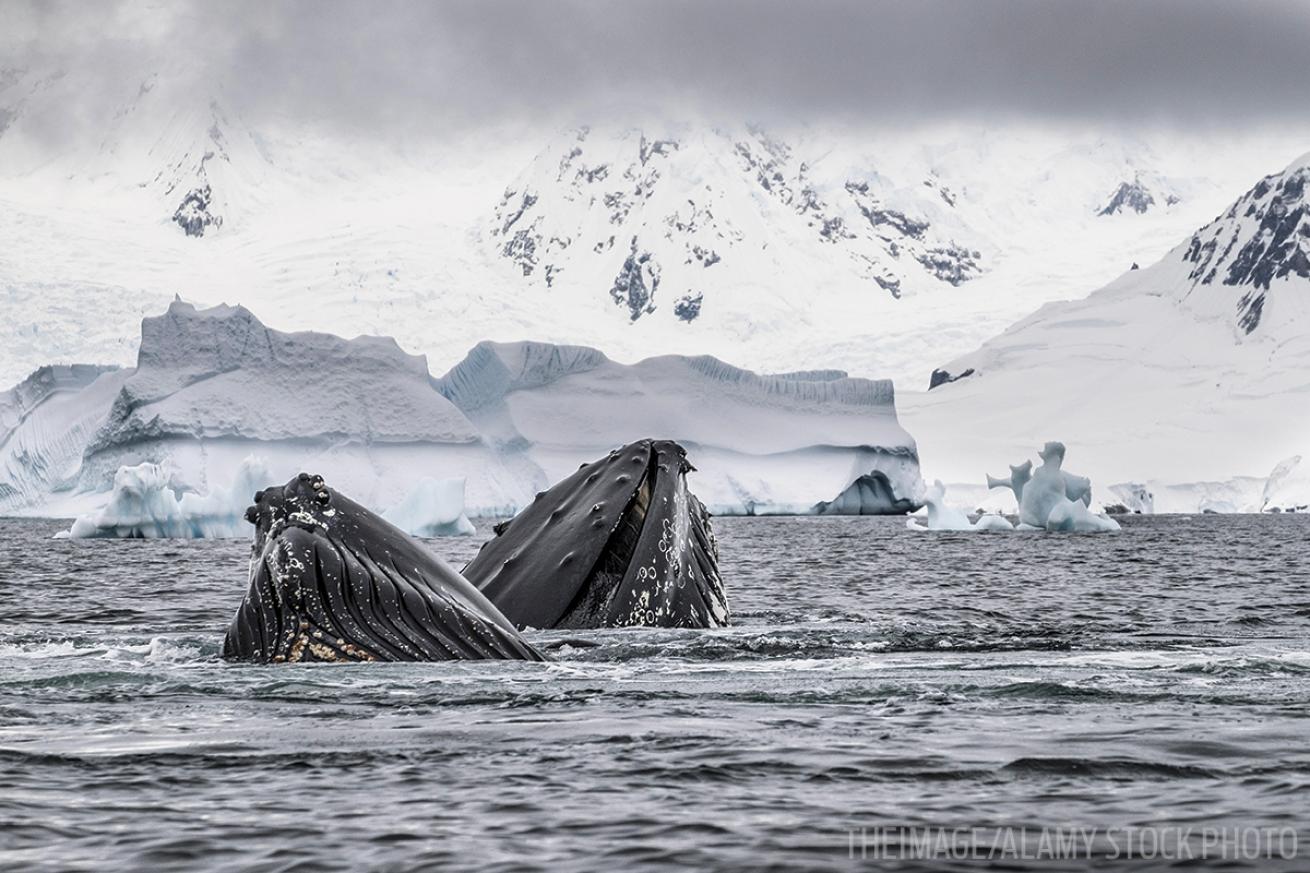
The Image/Alamy Stock PhotoTwo humpbacks breach off the Antarctic Peninsula, an iconic spot to see these massive marine mammals.
Apparently, the crew expected this. Whales were seen here on the last sailing — fat, happy and utterly content following weeks of gorging on krill.
Michael Green, an ex-British navy man, pilots us around the pod as they wave pec fins and circle the two dive boats. On cue, seven divers back-roll in to explore the wall below. When Green gives the signal, I jump too, only I’m not diving. A warm winter in New York had foiled my plans to accrue the expedition’s prerequisite 20 cold-water dives. As a Floridian, I had limited options. But as a diver of two decades and a kayaker with countless hours in my kayaking drysuit, my request for snorkeling was granted.
Within minutes, Green calls me back to the Zodiac. I haul myself in and he tells me to get ready. He’s going to motor to the whales and signal when to jump.
Suddenly I’m in again. I swim like mad. The shock of the 35-degree- Fahrenheit water feels like a fat man sitting on my chest. It stings and numbs my face. I mentally assure myself that I am OK, just winded from trying to power so much gear across the surface.
Green collects me and we make another pass. This time, I slide in just in front of the whale’s path. I edge closer. The white stripes of its body are exquisite. Then I feel its eye on me.
The humpback, 45 feet long, seems to recline midwater, barely moving. So I too stay still. I meet its gaze as tears spring to my eyes.
The moment is charged, and very different from humpback encounters I’ve had in the Turks and Caicos Islands. There, mothers are exhausted from birthing and nursing calves. In the tropics, there isn’t much for them to feed on.
By contrast, the Southern Ocean is nutrient-rich, a broth of krill. Like any American after Thanksgiving dinner, the whales here aren’t bothered by much. Or so it seems as I watch, stunned and grateful that this whale seems so curious about my presence.
This one — and its two pod mates — stays in the bay for an hour or so, long enough that the divers have time to surface, peel out of their scuba gear and join me. And I’m glad. What is happening is so unreal, so life-affirming, I’m grateful I’m not the only witness to this display of majesty.
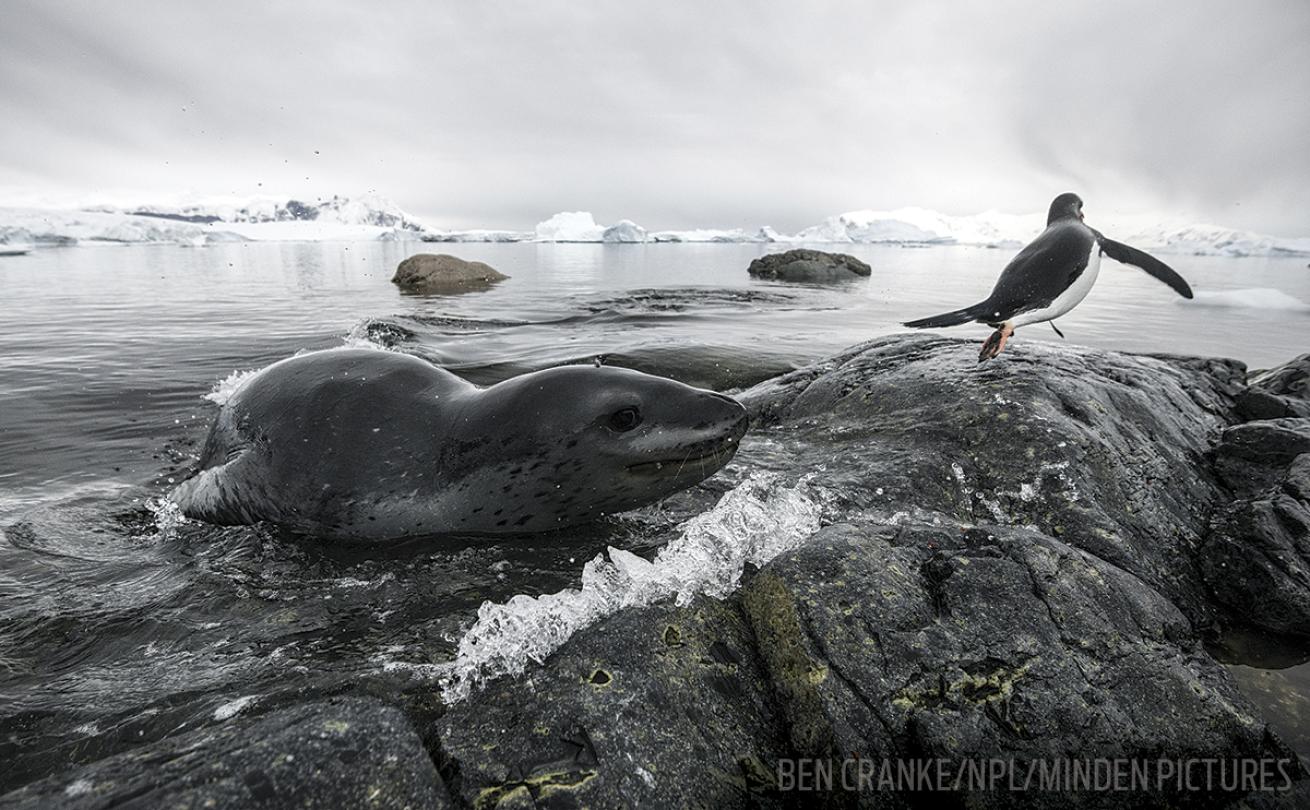
Ben Cranke/NPL/Minden PicturesFur and crabeater seals are not terribly curious about guests.
LANDSCAPE OF THE MIND
Feeding an unbridled curiosity is a large part of the Antarctica experience. This, along with the landscape, is hard for most to imagine when they conjure up images of the least-visited continent. When I tell friends how far south I am headed, they talk of sled dogs and wonder aloud about what we would see.
Antarctica is often described as a landscape of the mind — an unpopulated, pristine place so white and crisp, it’s as if it were plucked from the subconscious. It remains Earth’s largest wilderness area.
Mountains reminiscent of the Swiss Alps rise from the coastline. Glaciers tinted turquoise march to the sea edge and fall away like cliffs.
The wildlife, including colonies of penguins numbering in the hundreds, if not thousands, are immune to human presence. They waddle up to visitors, pecking at backpack straps or nosing their beaks into the dome of a GoPro. And why shouldn’t they? Humans pose no threat. All visitors to the continent must obey limitations set forth in the Antarctica Treaty, created to preserve this remote habitat.
On land, fur and crabeater seals are not terribly curious about guests; in the water, they’re quite keen for a meet- and-greet with divers. On our checkout dip at Half Moon Island, one keeps sailing up under me, powering toward my mask.
But even aside from the animals, diving in Antarctica is mind-blowing.
Take the ice. On the afternoon we motor to Neko Harbor, we devote 20 minutes to touring as the dive team looks for a berg that’s stable, unlikely to roll while we fin around it.
In the water, icebergs seem to glow. Each is white, pockmarked by erosion on all sides, like a golf ball. Tiny bubbles fizz from their sides. From the surface, this release of gas creates concentric circles emanating outward. Below the waterline, the fizzing makes a sound like milk meeting puffed-rice cereal. It all makes the icebergs seem somehow alive.
After everyone has circumnavigated as much of the berg as they like, we hop back into the Zodiac for another tour, past more icebergs with Gentoo penguins and crabeater seals perched on top, surrounded by the confetti of bergy bits dotting the blue-black depths.
“Take off your masks,” says Green.
“Smell that?”
The air is putrid. We guess that either a seal has a fresh kill or that a penguin colony lies just around the corner.
Green laughs.
“No, that’s whale breath,” he says. “I bet that doesn’t bring tears to your eyes in the same way, does it?”
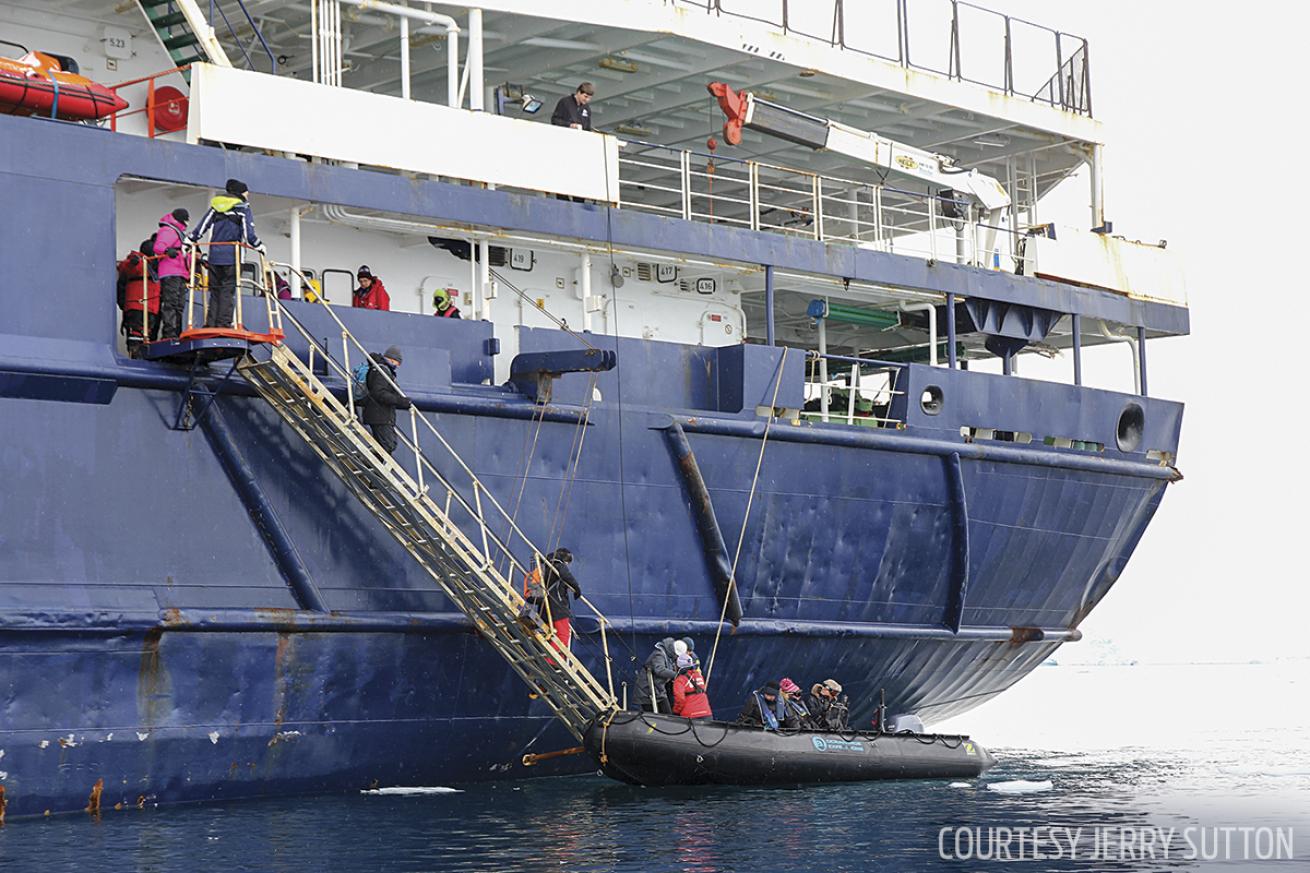
Courtesy Jerry HuttonM/V Ortelius
5 REASONS TO DIVE M/V ORTELIUS
01 SURF AND TURF Divers on Ortelius needn’t choose between in-water time and land-based excursions. Following every dip, divers are shuttled via Zodiac to the day’s landing spot, where they have time to explore.
02 WHALES AND PENGUINS A trip along the Antarctic Peninsula is likely to yield sightings and in-water encounters with at least three penguin species — Gentoo, Adelie and chinstrap — and several whale species as well, including Gerlach orcas, humpbacks and fin whales.
03 ICEBREAKER Ortelius is an icebreaker ship, meaning that it can cut through icebergs. It can also travel farther into frozen, packed-in places than other ships operating in Antarctica.
04 TERRA INCOGNITA Unless you are a Frozen Planet junkie, it’s hard to fathom what lies in Antarctica — especially on the coast, where mountains elbow glaciers: the stuff of dreams.
05 BRAGGING RIGHTS With Antarctica ranked as one of the least-visited places on Earth, not only do you enjoy rare company, but you’ll also dive one of the most pristine underwater destinations on the planet.
WHEN TO GO
M/V Ortelius, part of the Oceanwide Expeditions fleet, operates in Antarctica October through March — aka summer in the Southern Hemisphere — and offers Arctic tours the rest of the year.
DIVE CONDITIONS
Plankton blooms are more common in the middle of the dive season, with October through November and late February through March offering the best visibility, around 30 feet. Water temps vary from 26 to 36 degrees F at the surface.
OPERATOR
Oceanwide operates two ships in Antarctica, 298-foot Ortelius and 293-foot Plancius. Ortelius carries a maximum of 116 guests in 53 cabins.
PRICE TAG
Rates for an Antarctic voyage start at $7,950 for 10 nights, based on quadruple occupancy. The scuba supplement is $600.

